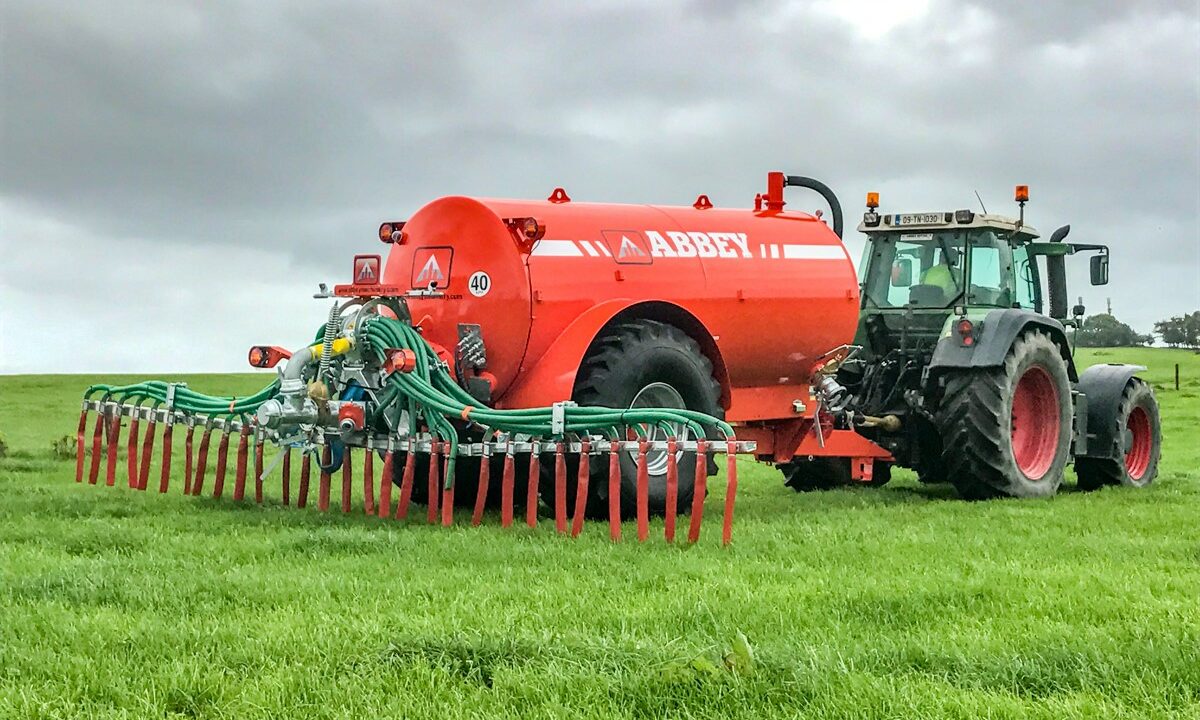Slurry, no longer considered a waste product of production, is considered a valuable source of fertiliser on farms.
It is a source of organic nitrogen (N), phosphorus (P) and potassium (K) and, if used wisely, can help to reduce chemical fertiliser bills on farms.
The typical value of 1,000 gallons of slurry has the equivalent content to a 50kg bag of 6-5-30, according to Teagasc.
Spring slurry
To obtain the maximum benefit from your slurry, the best time to spread it is in the spring, using low emission slurry spreading techniques (LESS).
Currently, around 10% is spread using LESS, with a target of 90% by 2027.
There is significant N loss from a splash plate, due to the slurry being spread over a wide area.
According to Teagasc, up to a 60% less N (as ammonia) is wasted through LESS.
On average, you would retain 50% more N through LESS when compared to using a splash plate.
Along with maximising the nutrients, LESS allows you to graze paddocks sooner after spreading.
Fertiliser prices in 2021 have led to increased input costs on farms, with 2022 not looking very promising either.
Typically, 2,000 gallons of slurry has a value of €40, but according to Teagasc, due to the current prices of fertiliser it is now €100/2,000 gallons.
Value
Although the nutrient value of the slurry has not changed due to increased prices of chemical fertiliser, the monetary value has.
Because of the increasing cost of chemical fertiliser, obtaining maximum benefit from your slurry should be a priority this spring.
The spring may seem like a long time away, but we have just six weeks remaining in 2021, with the ban lifting in zone A, 12 days into the new year.
A lot of dairy farmers take advantage of using the contractor in the spring, to save time and reduce their workload.
This time of year is a relatively quiet time for contractors, so making contact with them now and getting yourself on the top of the list for spring is wise.
You should, ideally, use a contractor that is using LESS equipment and take full advantage of the extra nutrients that can be obtained.
